We may earn income from links in this post. Please read this Disclosure for details.
This delicious recipe for Poisson Cru à la Tahitienne is an easy appetizer featuring raw tuna marinated in fresh lime juice mixed with creamy coconut milk, cucumbers and tomatoes.
I first discovered this traditional French Polynesia dish while island-hopping through the South Pacific. This is the very best Tahitian poisson cru recipe around!
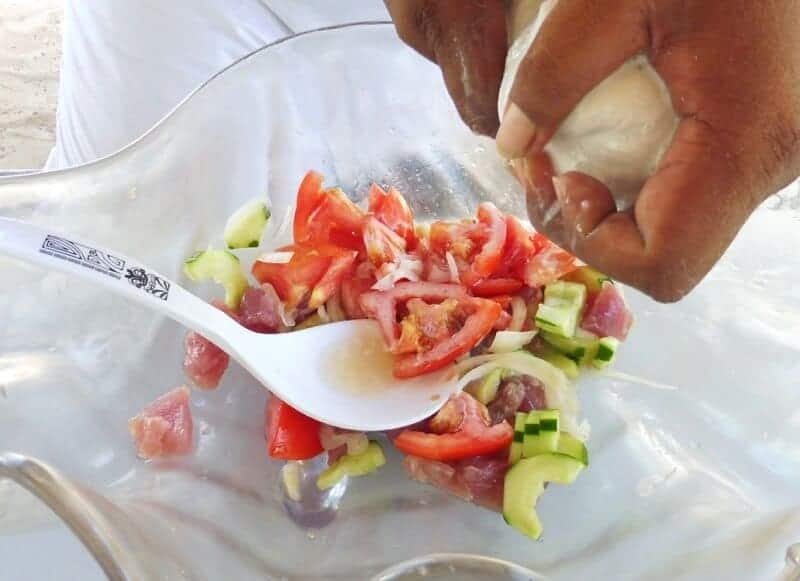
Why You’ll Love This Tahitian Fish Salad
- It’s easy! Much like seafood salads such as ceviche, esqueixada de bacalao (cod fish salad) and Spanish salpicón de mariscos (seafood cocktail), it takes just minutes to prepare!
- This is an authentic French Polynesian recipe. It’s the one taught in a cooking class at Tikehau Pearl Beach Resort, a luxury resort set on its own motu (tiny island).
- Known as ia ota in Tahitian and Oka i’a in Samoa, poisson cru is considered the national dish of Tahiti and the islands of French Polynesia.
- it’s refreshing and delicious to enjoy on a hot summer day.
A Poisson Cru à la Tahitienne Cooking Class
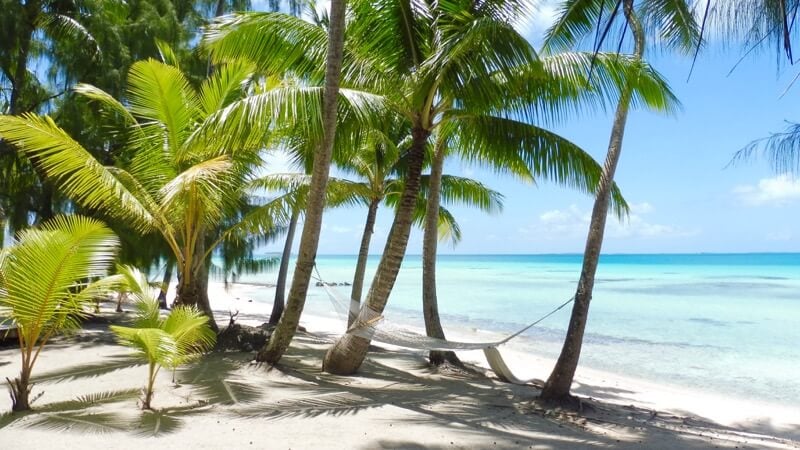
To learn how to make an authentic Tahitian poisson cru, we we travelled across the endless expanse of the Pacific to a speck of sand ringed by coral and dotted with spiky Pandanus shrubs.
Our local guide Chef Bachou Raufau toted the provisions to a shady spot. There he built a fire to grill the red snapper.
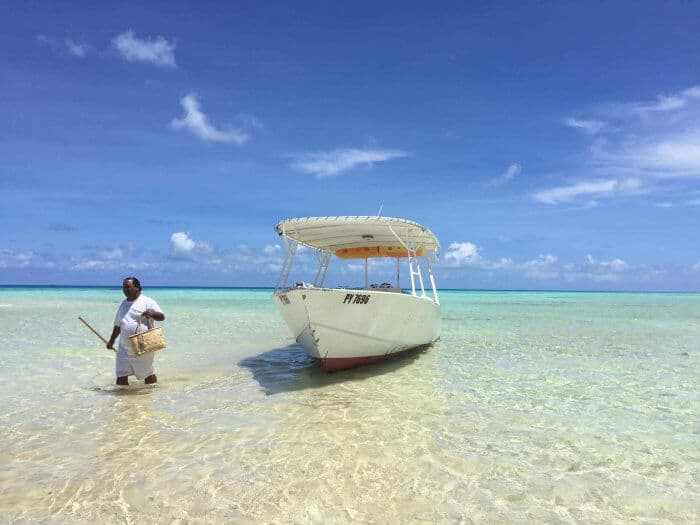
Is Poisson Cru Tahitienne a Fish Salad or a Ceviche?
This traditional dish of raw tuna marinated in lime juice is quite similar to Latin ceviche.
However, there are important differences between ceviche and poisson cru.
To begin, unlike Latin ceviche, in a Tahitian ceviche, the pieces of veggies are much larger.
To make poisson cru the vegetables are coarsely chopped rather than finely diced.
Chunks of fresh seeded cucumber are mixed with chunks of fresh tomato rather than the minced veggies you’d see in a ceviche in Latin America.
Poisson Cru is also different from Latin ceviche in the type of fish used.
The best fish to use for Poisson Cru Tahitienne is tuna.
A flaky fish will disintegrate and quickly turn mushy. Oily fish such as mackerel won’t provide the same delicate flavour.
“For us, shark, turtle and eel are sacred, so we don’t eat them, “ said Bachou our chef as he chopped a slab of tuna into chunks on his cutting board.
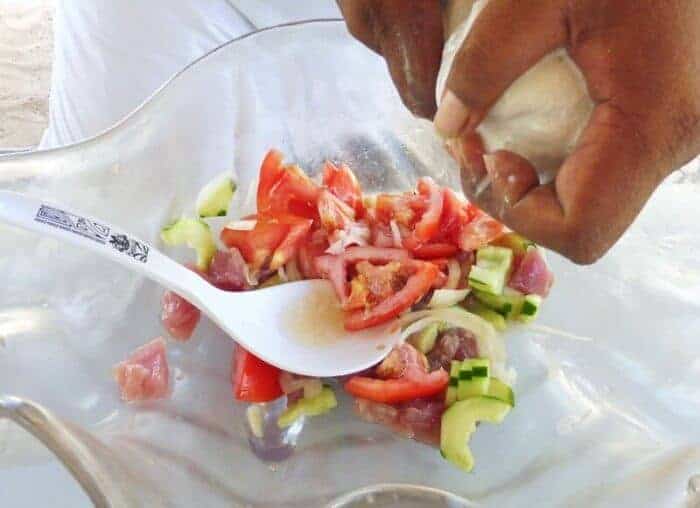
The fish is also marinated very briefly rather than marinated for a long period of time.
The addition of coconut milk is also an important step in making Poisson Cru Tahitienne.
“To get the freshest miti haari or coconut milk, you grate a ripe coconut and then squeeze the milk out through a cloth,” he explained.
The Poisson Cru Tahitienne we made that day was velvety, with the tender cubes of tuna tasting as fresh as the sea.
The coconut milk added a touch of sweetness while the fresh veggies add crunch and texture.
Tahitian Poke
The term “poke” in Hawaiian means “to slice” or “to cut crosswise into pieces.” It also typically consists of bite-sized pieces of raw fish such as tuna or salmon.
So in these ways poisson cru could be considered a Tahitian poke.
However, it differs from poke as it’s not marinated in a soya or other intensely flavoured sauces. Instead it’s simply tossed with lime juice and coconut milk.
It’s also served on its own like a salad rather than served over rice as part of a poke bowl.
To make Tahitian poke, you need to vary the traditional poisson cru recipe by garnishing it with toppings.
We love to use sliced avocado, strips of seaweed, sesame seeds, and green onions.
Serving Suggestions
In French Polynesia, this raw fish salad is often served as an appetizer prior to grilled fish and meats such as flank steak, pork ribs and chicken.
It would also pair well with Guatemalan Tapado Seafood Soup served with slices of crusty bread or rolls.
During our cooking class, it was followed by grilled red snapper, a hearty main course with a smoky flavour and crispy skin, infused by the charcoal of the open fire.

We enjoyed it all at a table set in the shallow water’s edge. Sleek lemon and black tip sharks glided past, hoping for a handout.
I watched my table scraps get snapped up by a flurry of snapping jaws and decide to lift my toes out of the water.
While Polynesian tastes and traditions might preclude eating shark, the feeling might not be reciprocal.
Tips for Making French Ceviche or Tahitian E’ia Ota
Although this recipe for E’ia ota is very easy, there are a few tips and secrets to success when making any marinated raw fish recipe.
For the best marinated fish Tahitian island-style, here’s what you need to know:
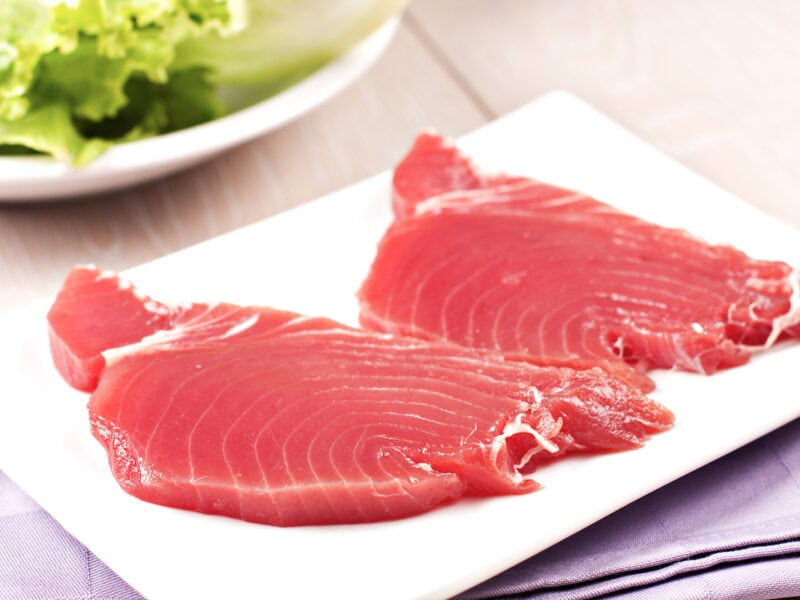
- Select the highest quality raw tuna that you can afford. Sushi-grade tuna is your best choice. You may need to order it in advance from your fish monger.
- Look for tuna that appears moist but not soggy. It should have a fresh-from-the-sea smell with no fish odour.
- Tuna should be bright red and translucent with no browning.
- Fresh coconut milk is best but light canned coconut milk makes a good substitute. Be sure to stir the coconut cream throughly before using.
- This fresh ceviche should be prepared just before serving. The raw fish should be marinated in fresh lime juice for just a few minutes not hours. If the delicate raw tuna sits in lime juice for too long it can burn the flesh.
- If you have leftover coconut milk, use it up in this recipe for Coconut and Chia Pudding.
Recipe
Poisson Cru Tahitienne
Equipment
- Knife
Ingredients
- 1 tomato
- 2 medium cucumbers
- 2 limes
- 1 small white onion
- 1 pound raw ahi tuna
- 3/4 cup fresh coconut milk grate ripe fresh coconut and squeeze the milk out of the pulp through cheesecloth or use light canned coconut milk
- salt and pepper to taste
Instructions
- Cut the tuna into bite-sized chunks and marinate in lime juice for five minutes.
- Peel, remove seeds and dice cucumbers into large pieces and place in a large glass bowl.
- Add diced tomatoes and onion. Mix in marinated tuna and lime juice
- Let sit for a few minutes, add coconut milk, season with salt and pepper and serve immediately.
Notes
- Chop the veggies and fish into large chunks not tiny pieces.
Nutrition
Travel Guide for Tahiti and French Polynesia

If you’re planning a trip to French Polynesia, be sure to check out this complete guide to choosing a luxury resort on Bora Bora so you can compare prices, location and special features of each of the resorts.
Official Tahiti Tourism: Get travel advice, maps and information on travel between the islands.
Relais Mahana Huahine: Beach bungalows on what’s known as the Garden of Eden island.
Le Taha’a Island Resort and Spa These are the overwater bungalows of your dreams complete with glass-bottomed floor and private decks with steps into clear waters.
Tikehau Pearl Beach Resort: Although it might be tempting to opt for one of the overwater bungalows, your best bet is one of the beach bungalows. They come with AC, an indoor/outdoor washroom and a private deck with hammock.
Tucked within a wild coconut grove and surrounded by pink sand beaches, this luxury resort is set on a tiny coral atoll near Tikehau, 350 km northeast of Tahiti.
The Tuamotu archipelago is dubbed Tahiti’s ‘strand of pearls’. It’s a string of 77 stunning islands and atolls strewn across the South Pacific.
Air Tahiti Nui: Air Tahiti Nui flies direct from Los Angeles International Airport (LAX) to Faa’a International Airport in Papeete, Tahiti. www.airtahitinui.com
Save to Pinterest!


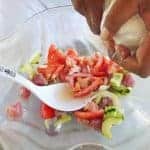
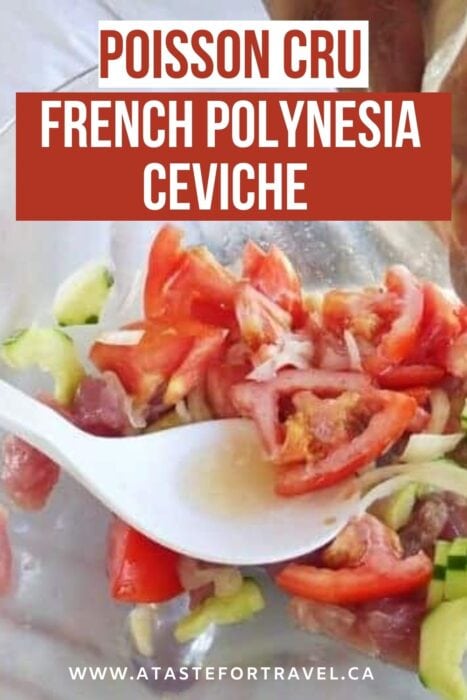
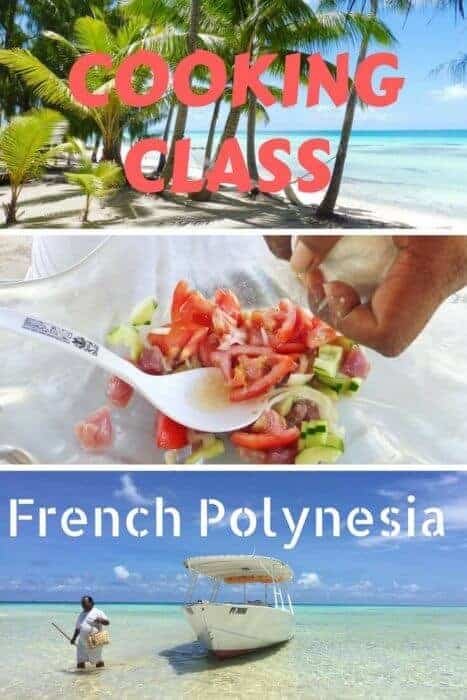
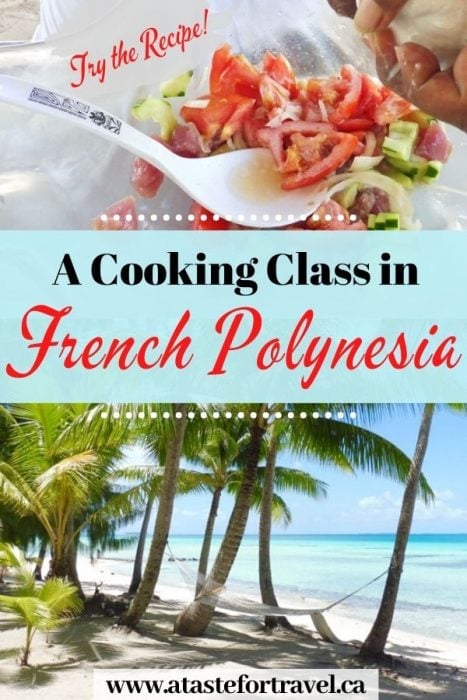
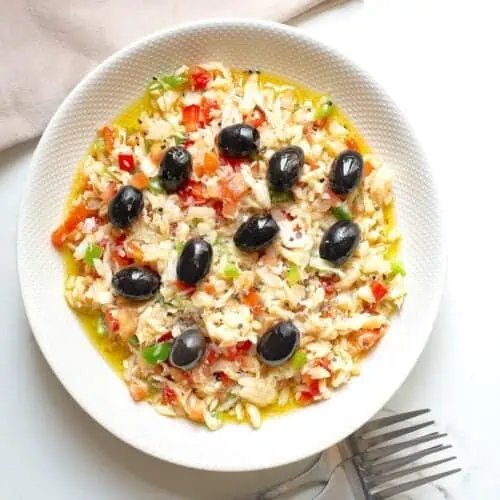
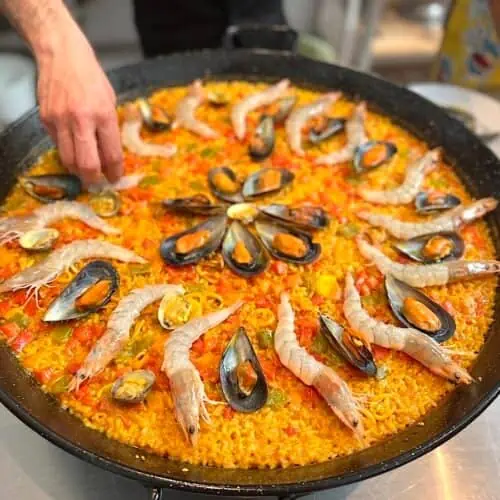
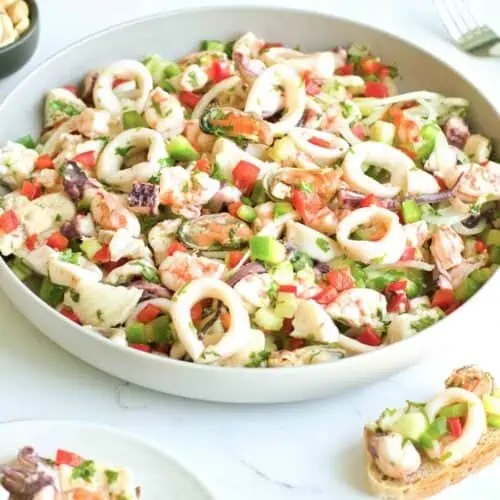
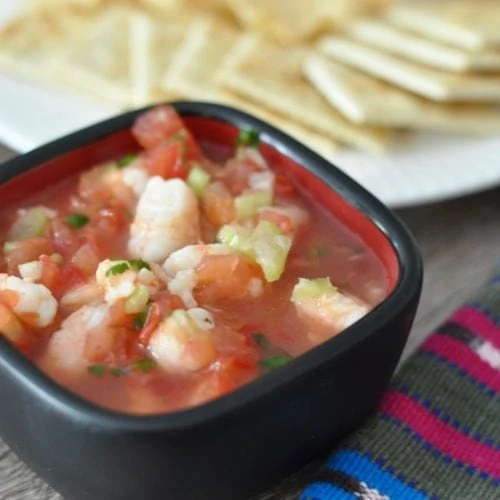
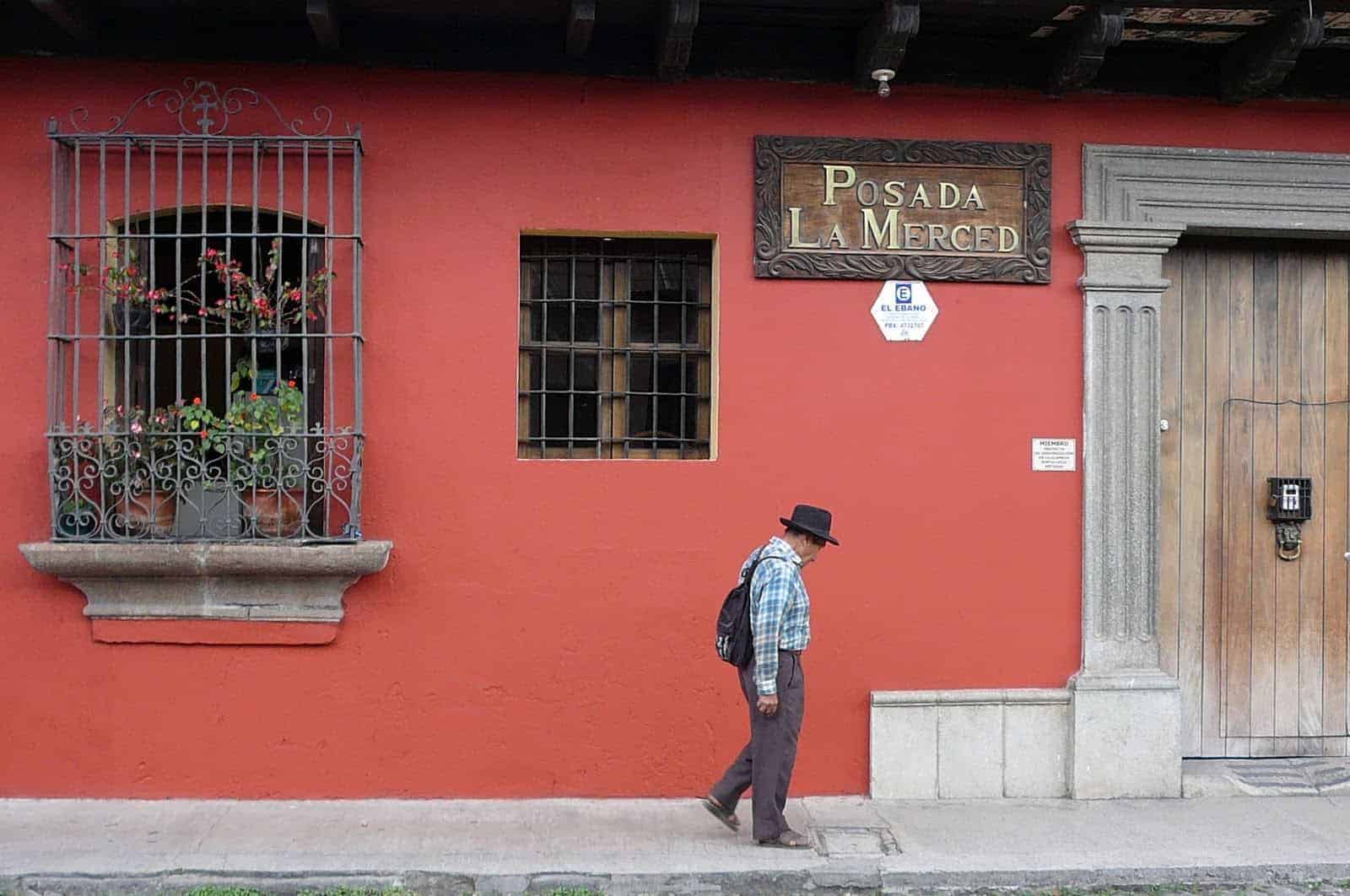 Essential Guide to Studying Spanish in Antigua Guatemala
Essential Guide to Studying Spanish in Antigua Guatemala
ashok
Thanks For Sharing this amazing recipe. My family loved it. I will be sharing this recipe with my friends. Hope the will like it.
Leslie
Thank you for sharing what you learned! I would have been missing out on this great recipe! LOVE!
Linda
I love taking cooking classes when I travel, as well as learning about their traditional/signature dish. This fish ceviche looks so refreshing, good, and I can’t wait to picture myself eating this with Tahiti music in the background
Michele Peterson
Cooking classes really are a great way to pick up some new cooking skills and enjoy a fun lunch at the same time!
Alexandra
Love the fresh and delicious flavours of this dish!
Kathryn D
This fish dish sounds so tasty and easy to make too!
Estelle Forrest
This sounds so so yummy! And I usually make my ceviche with chunkier veggies so I think I will really like this!
alison abbott
I love taking a cooking class when I travel. Such a great way to learn about the culture. This recipe looks delish, and one i will try once the weather warms up. Something about eating ceviche with snow outside that really doesn’t work for me. What a gorgeous location-I think anything would taste pretty wonderful in French Polynesia.
Devon
Thank you for sharing it was delicious! We enjoyed this very much and it was super quick to make. If only we had fresh coconuts!!! Me and my husband ate this with almost every meal when we were in Bora Bora.
Michele Peterson
I’m happy to hear you enjoyed it Devon! I agree….it would be wonderful to have a coconut tree handy!
Doreen Pendgracs
Michele, I am SO with you on this journey. Your photos are delightful, and I can just taste the ceviche. I’ve not yet been to Tahiti, but French Polynesia is definitely on my list!
Suzanne Fluhr
Wow. Those islands are the definition of sea level—until sea level rises. I’m not a fan of raw fish, but I did enjoy some of the ceviche on our recent trip to Ecuador and Colombia and I’m a fan of the vegetables, so maybe I’d give this version a try. As for eating surrounded by agitated sharks—-nah, but the location sure looks beautiful, especially after a freezing day here in Philly.